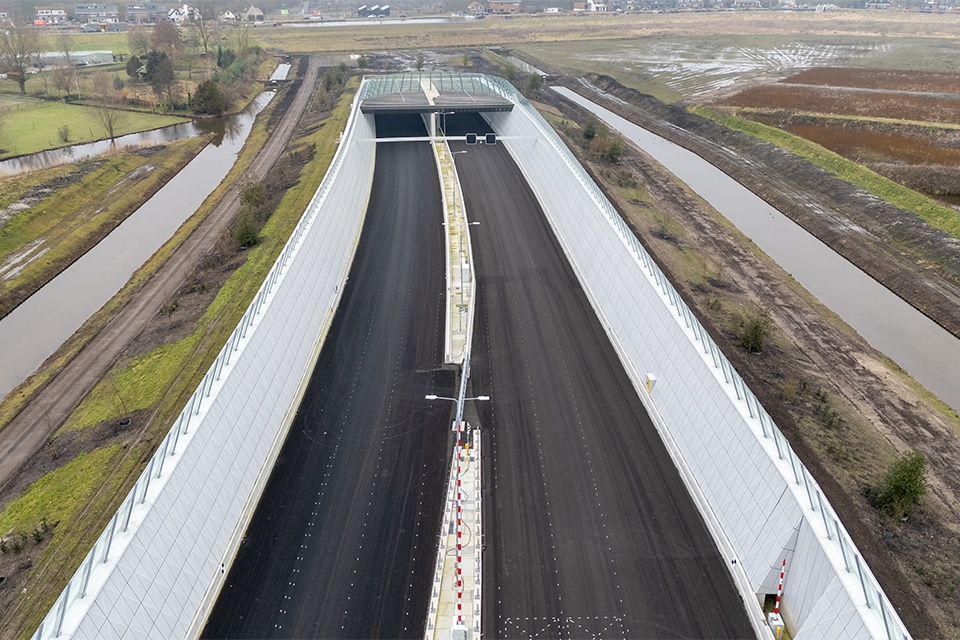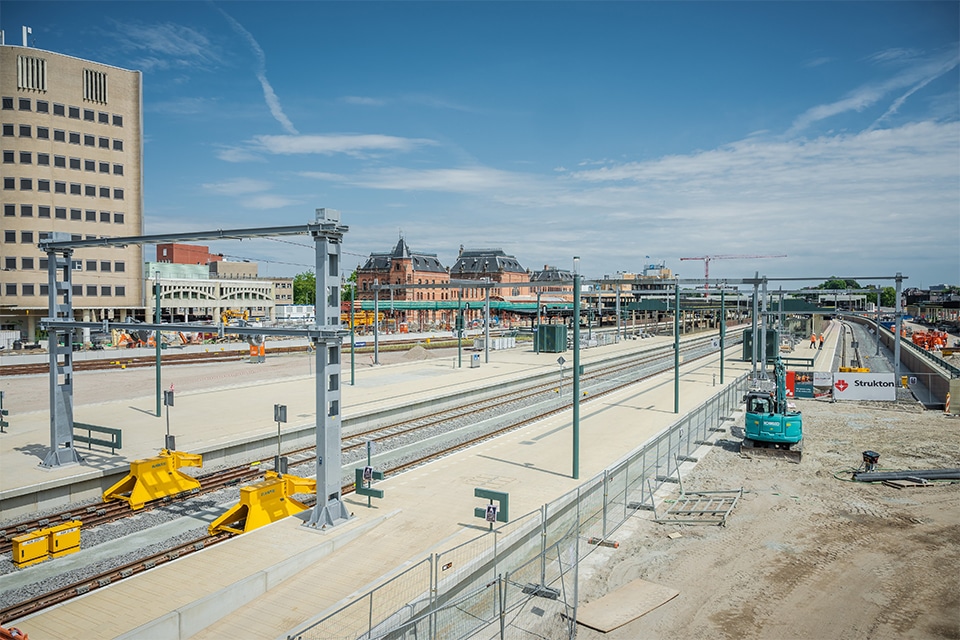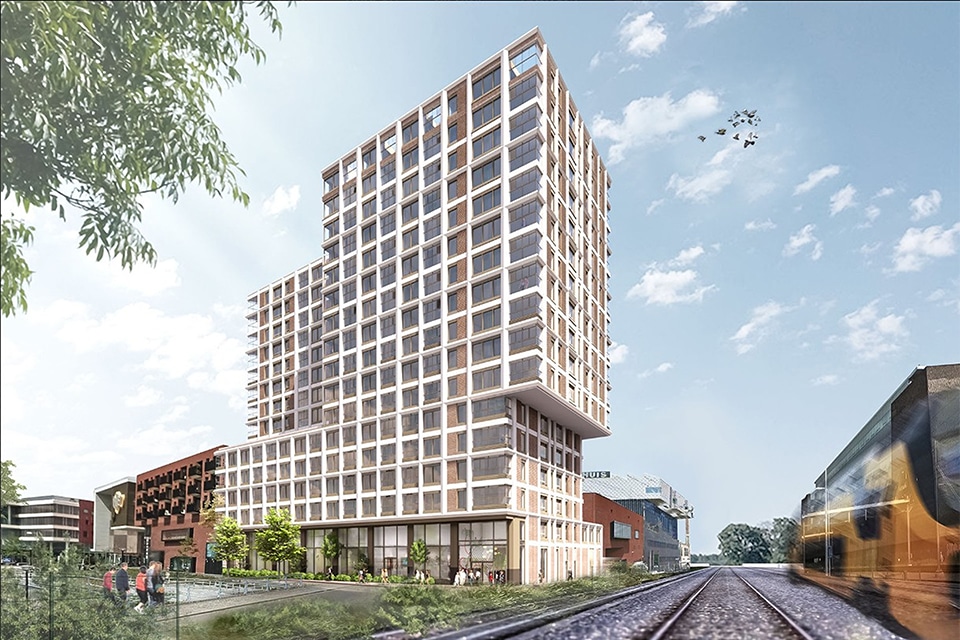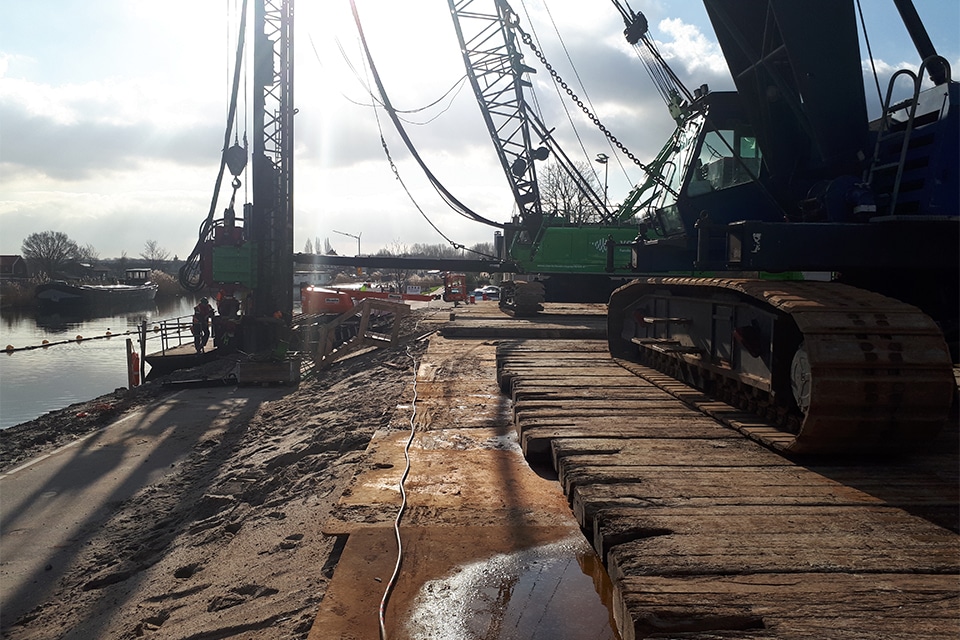
Approaching residential construction in a utilitarian manner
That a transformation of a former office building can also be done financially with smaller volumes is proven by Bouwbedrijf De Waal Utrecht B.V in Amersfoort. There, on the city ring road, 38 extremely modern apartments will soon be completed in an old 1984 office building. Director Wim de Gruijter and project leader Robin Kamperman explain how they got the job done.
"To get something financial out of even small volumes, you really have to be able to think in prefab, plan ahead and have experience," says De Gruijter. "You must not let the man on the floor figure it out during execution. Not standing all bent over a drawing, but thinking everything out ahead." In addition, he says, you will have to involve subcontractors and the architect in your plans at an early stage. "I don't call it BIM, but the roundtable way. In fact, you have to approach residential construction in a utilitarian way. In a home of ours, for example, there is no meter box; it's in a central location." Using this method, De Waal recently delivered 28 two-bedroom apartments and 10 three-bedroom apartments on the city ring in Amersfoort.

Prefab
Almost everything on the new apartments will be prefabricated. The structures, which requires very thorough and detailed design and engineering, but also all installations. De Gruijter: "Both E- and W-installations. We don't pull cables and pipes, but everything is plug and play. Everything is there in advance. That way you can quickly build a very large number of homes with a limited number of people. It does require that you think through and design everything very well in advance. So we make high demands on a project leader. He has to know everything from the bottom of the pile to the ridge of the roof."
Train
The project leader in question is Robin Kamperman. He supervised the transformation in Amersfoort. "As soon as all the permits were in place, we started the demolition: all the flooring, interior walls, ceilings and installations were removed. On the roof was a technical room with installations, which we turned into two rooftop apartments." From there, sawing and drilling work began for the installations, outdoor spaces and balconies attached to the old office building. The new window frames could also be installed, making everything wind and watertight again. "Then the metal stud builder was given 5 days to install the walls. That kept one side of the walls open, so the installer could do his work in 5 days. Then the metal stud builder closed the walls. This little train keeps moving through the building," Kamperman explains. "By insulating all the residential separating walls including suspended ceilings, a box-in-box system was created in the existing environment, allowing us to meet the desired requirements in terms of fire resistance, thermal, contact and airborne sound insulation."

Computer floor
The construction company is also responsible for the steel structures of the balconies. Kamperman: "These stand on columns and hang from consoles attached to the floor. On the city ring side, folding windows and acoustic balcony plates were also added to the balconies to meet noise requirements." The next step was to install the anhydrite floor with underfloor heating, and that took quite a bit of work. "There was a computer floor in there that was 26 inches high and we had to somehow get back to that level. To do that, we applied an insulating mortar of 17 centimeters, with a tacker plate of 25 millimeters and then the screed with underfloor heating."
Technically, the 38 apartments comply with the latest technology. The apartments are gasless and the roof has PV panels. The building contains ventilation air heat pumps from the Swedish brand Nibe, which draws fresh air from the facade and extracts it from the apartments. That warm air from the apartments is passed along the fresh air, preheating it. The heat generated by compression in the heat pump is used to heat tap water and floor heating. De Gruijter: "That makes a significant difference in energy costs."
No construction site personnel
Construction company De Waal is a so-called "general contractor. The construction company does not employ its own site personnel, but it does have superintendents and project leaders who coordinate the construction and a thorough work preparation. The company works with regular subcontractors and installers. De Waal often develops and designs construction projects together with those companies, involving the subcontractors at an early stage.
More demolition and new construction
Despite its extensive experience with transformation projects, De Waal is putting more effort into demolition and new construction in the near future. "We have a number of locations where we are quite capable of building a substantial number of homes in series," said Wim de Gruijter. "For these still-to-be-developed locations, this gives more opportunities in a new development environment, more diversity for target groups and fitting into future perspectives of new neighborhoods emerging in old industrial/office areas."



